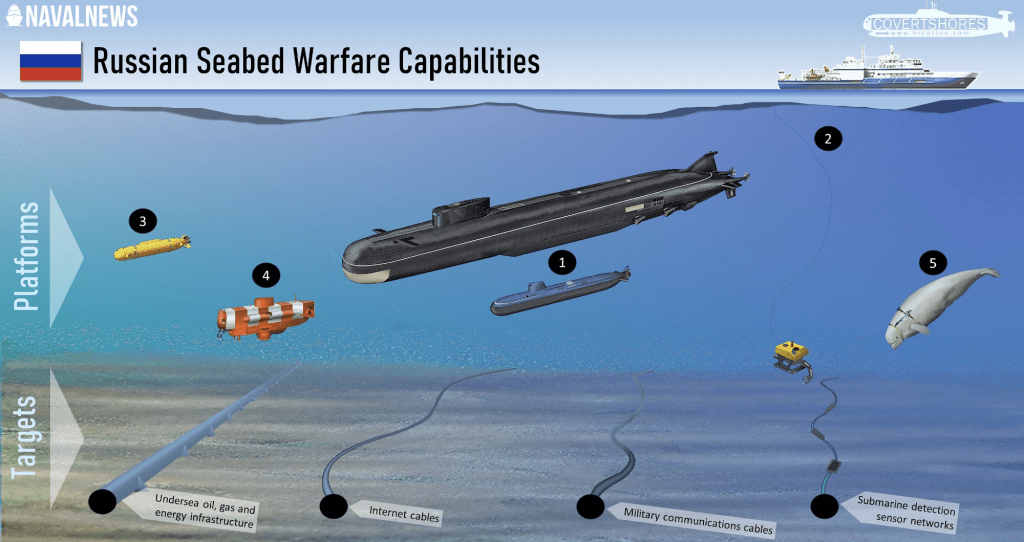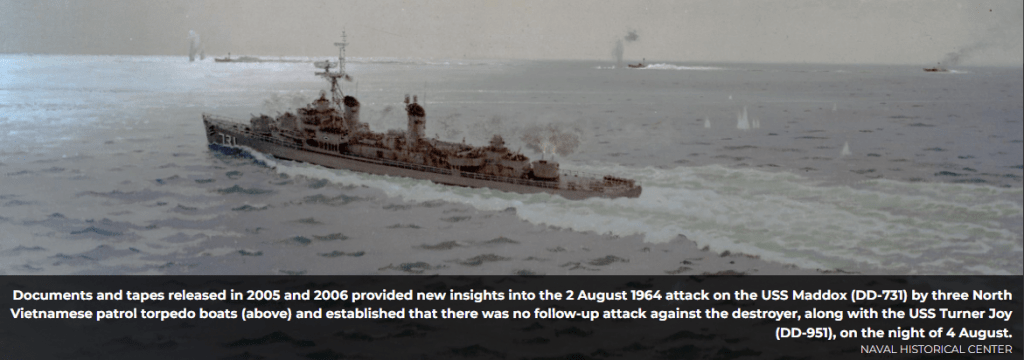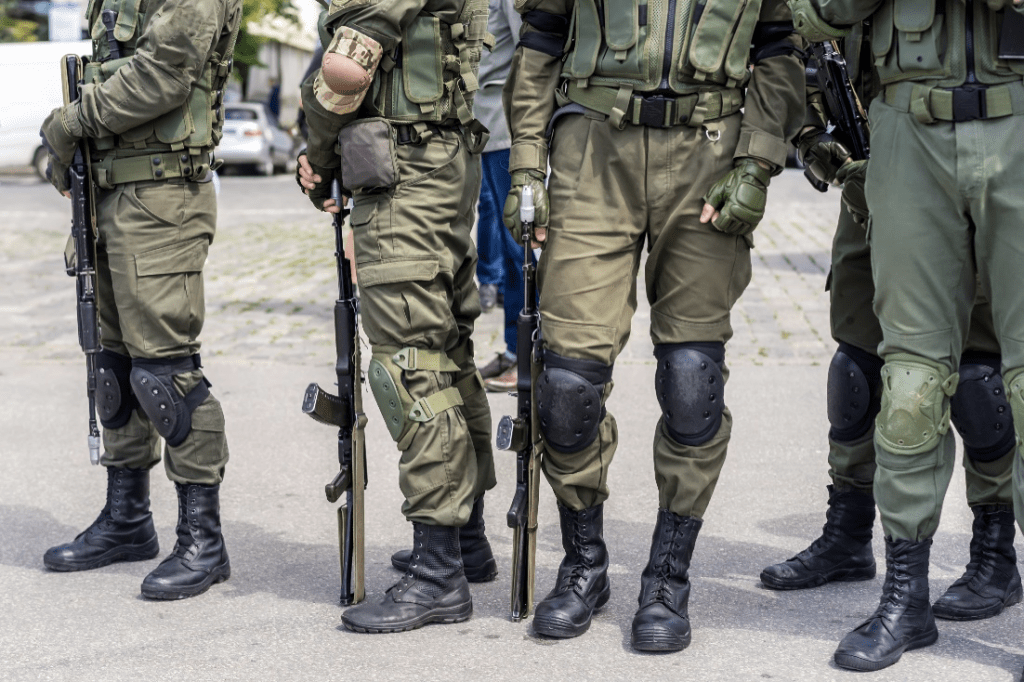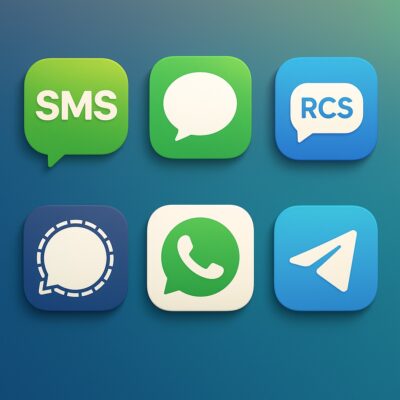42,214 Active Engagements
Russia ‘Hybrid Warfare’: Targeting Critical Infrastructure of Underwater Cables
Gas leak at Nord Stream 2 as seen from the Danish F-16 interceptor on Bornholm, Denmark September 27, 2022. Danish Defence Command/Forsvaret Ritzau Scanpi
NORD STREAM PIPELINE SABOTAGE
Nord Stream is joint civilian owned critical infrastructure that is not only Russian privately owned; but also privately owned by NATO ally countries. The pipelines were sabotaged by professional underwater explosive demolitions under the Baltic Sea. Vladimir Putin calls the sabotage ‘an act of international terrorism ‘that sets a dangerous precedent.’ blaming the United States, Poland, and Ukraine. An attack on critical infrastructure is considered an act of war…and the Nord Stream pipeline sabotage is by no means an exception. Evidence, statements, and motives tend to support Putin’s claims.
Geopolitical risk refers to the potential impact of political, social, and economic factors on business, investment, and financial decisions. It refers to the likelihood that events or conditions in a specific country or region could have an adverse impact on an individual, organization, or industry.
While evidence is being carefully reviewed, International Energy Agency director Faith Birol stated, “It was ‘very obvious’ who was behind the suspected sabotage against the Nord Stream pipelines which caused major leaks into the Baltic Sea.” Russian officials are placing the blame on the West. Russia failed to get the UN Security Council to ask for an independent inquiry into explosions that ruptured the Nord Stream. Only Russia, China and Brazil voted in favor of the Russian-drafted text on Monday, March 27, 2023. The Kremlin said it would keep demanding an international investigation into the blasts.
Though widely misreported as single pipelines, Nord Stream comprises of two separate projects, Nord Stream 1, and Nord Stream 2. Both pipelines each comprise of two pipes, NS1A and B, as well as NS2 A and B, for a total of 4 physical pipes. Both pipes land in Lubmin, Germany. They are majority owned (51 percent) by Russia, along with German, Dutch and French stakeholders. The pipeline bypassed Ukraine to deliver Russian natural gas directly to West Europe. The project was opposed from the start by the United States.

Source: Gazprom, Marine Traffic, NAVTEX (November 18, 2022)
It is important to note that international law prohibits acts of sabotage and the targeting of civilian infrastructure, including pipeline, and any such acts would be considered a serious violation of international law.
Nord Stream Timeline of Events
In 2011, Nord Stream 1 (NS1) runs from Vybord, in northwestern Russia near Finland, and entered service in 2011. It is operated by Nord Stream AG.
In 2016, Former US President Barack Obama stated his concerns about the Nord Stream pipeline during a joint news conference with German Chancellor Angela Merkel, saying, “I’ve been clear on this issue for a very long time now. I believe that a project like this is not good for Europe because it would undermine the basic principle of diversification that’s so important for the energy security of Europe.”
In 2017, the US Senate passed a bill in a 98-2 majority that included language calling for the imposition of sanctions on companies involved in the construction of Russian energy pipelines, including Nord Stream 2. The sanctions were sharply criticized by Germany, France, Austria, and the European Commission who stated that the United States was threatening Europe’s energy supplies.
In a joint statement, Austrian Chancellor Christian Kern and German Foreign Minister Sigmar Gabriel said, “Europe’s energy supply is a matter for Europe, and not for the United States of America….to threaten companies from Germany, Austria and other European states with penalties on the US market if they participate in natural gas projects such as Nord Stream 2 with Russia or finance them introduces a completely new and very negative quality into European-American relations.”
The German Eastern Business Association said in a statement that “America wants to sell its liquefied gas in Europe, for which Germany is building terminals. Should we arrive at the conclusion that US sanctions are intended to push competitors out of the European market, our enthusiasm for bilateral projects with the US will significantly cool.”
In July 2018, US President Donald Trump criticized Germany’s support for the Nord Stream pipeline during a NATO summit, saying, “Germany is totally controlled by Russia because they will be getting 60-70% of their energy from Russia and a new pipeline.”
In January 2019, the US ambassador in Germany, Richard Grenell, sent letters to companies involved in the construction of Nord Stream 2 urging them to stop working on the project and threatening them with the possibility of sanctions.
In December 2019, US Senators Ted Cruz and Jeanne Shaheen introduced a bill that would impose sanctions on vessels used to lay pipelines for the Nord Stream 2 and TurkStream projects.
In March 2021, US Secretary of State Antony Blinken warned Germany about the risks of the Nord Stream 2 pipeline, stating that “the pipeline divides Europe, it exposes Ukraine and Central Europe to Russian manipulation and coercion, and it goes against Europe’s own stated energy and security goals.”
On May 19, 2021, the US government waived various sanction against the main company involved in the project, Nord Stream 2 AG, while imposing sanctions on four Russian ships and five other Russian entities. Russian Deputy Foreign minister Sergei Ryabkov welcomed the move as “a chance for a gradual transition toward the normalization of our bilateral ties.” Biden also waived sanctions on the Nord Stream CEO, Matthias Warnig, an ally of Russian President Vladimir Putin.
On 21 July 2021, the US and Germany proposed an agreement to complete the Nord Stream 2 pipeline while shielding Ukraine and other Central and Eastern European countries from any future Russian efforts to use the pipeline as a geopolitical weapon. The deal was immediately opposed by Ukraine and Poland and US lawmakers on both sides of the aisle, with Foreign Policy reporting that it had become a “lightning rod issue” and that “Biden’s post-Trump-era honeymoon period with some Eastern European allies has come to a screeching halt.”
Deutsche Welle reported that the deal promoted “strong condemnation” from Poland, with government spokesman Piotr Müller saying, “We have emphasized from the very beginning that Nord Stream 2 is a geopolitical project that destabilizes the political situation in central and eastern Europe.“
In Sept 2021, Nord Stream 2 (NS2) is completed.
On February 7, 2022, speaking at a joint news conference with German Chancellor Olaf Scholz, Biden said, “If Russia invades… again, then there will be no longer Nord Stream 2. We will bring an end to it.” When asked how he would do that, he responded, “I promise you we will be able to do it.”(Reuters, 2022)
February 24, 2022: Russia invaded and occupied part of Ukraine in a major escalation of the Russo-Ukrainian War, which began in 2014.
September 26, 2022: A series of deep-sea explosions blew up Nord Stream 1 and Nord Stream 2. Danish police stated later that “powerful explosions” blew four holes in the pipes and its near twin, Nord Stream 2.
September 27, 2022: Former Polish Foreign Minister Radoslaw Sikorski, a former citizen of the UK and fellow at multiple US and NATO think tanks, and Poland’s former defense (2005 – 2007), and foreign minister (2007 – 2014), deleted his tweet saying, “Thank you, USA” for the Nord Stream pipelines incident.

In response, Russian Foreign Ministry Maria Zakharova questioned if Sikorsky’s tweet constituted an“official statement on this being a terrorist attack?”


Shortly after the Nord Stream sabotage, Western countries asserted that Russia was behind the attacks on their own pipelines via a false flag operation. A false flag operation is a covert or deceptive action that is carried out by a group or government to make it appear as if another group or government is responsible. The term “false flag” comes from the idea of a military vessel flying the flag of another country to deceive the enemy.
Recently, US intelligence officials suggested a pro-Ukrainian group was to blame. Mykhailo Podolyak, an adviser to the Ukrainian president, said Ukraine “was absolutely not involved.” Moscow questioned how the US could make assumptions without an investigation. Russia, blaming the West, has called on the UN Security Council to independently investigate them.
According to joint research by several German media organizations, the boat used to plant the explosives was a yacht hired from a firm based in Poland, which reportedly belonged to two Ukrainians. Allegedly 6 people boarded the vessel all with forged passports and traveled to Christianso, a Danish island near where the pipeline attacks occurred. The nationalities of those who carried out the attack were unclear. Defence Minister Boris Pistorius warned against jumping to conclusions. It could be a false-flag operation aimed at pinning the blame on pro-Ukrainian groups, he told German radio: “The likelihood of one [theory] or the other is just as high.” (McGarvey, 2023)
False flag operation can take many forms, such as terrorist attacks, assassination, or sabotage, and they are often used to justify a military or political response. The goal of a false flag operation is to create the appearance of an external threat or enemy to gain support for a particular policy or agenda. Read More about Notable False Flag Operations
Russia ‘Hybrid Warfare’: Targeting Critical Infrastructure of Underwater Cables
Underwater cables, also known as submarine cables or undersea cables, are cables that are laid on ocean floor to provide telecommunications and internet connectivity between countries and continents. Underwater cables are a critical component of the global telecommunications infrastructure, as they enable high-speed and reliable connectivity between countries and continents. They are used for a wide range of applications, including voice and video communications, internet access, and data transmission for businesses and governments. Laying underwater cables is a complex and expensive process, involving specialized ships and equipment, and it requires careful planning and coordination between multiple parties.
Underwater cables are at the top of the Department of Homeland Security’s list of “Critical Infrastructure”; their landing areas are well-known mostly around NY, Miami, and Los Angeles
Russian capabilities against undersea cables are highly advanced. Attacks against marine energy infrastructure and other marine infrastructure such as undersea internet cables are a known vulnerability for sabotage and a likely target of attack if the war continues to escalate. Russia may carry this out via hybrid warfare which blends conventional warfare, irregular warfare, and cyberwarfare with other influencing methods.
In recent years, states employ non-state actors and information technology to subdue their adversaries during armed conflicts and typically in the absence of a direct armed conflict, e.g., Russia invading Crimea in 2014. Russia achieved its objectives by “deniable” special forces, local armed actors, economic clout, disinformation, and exploitation of socio-political polarization in Ukraine. The objective is to inflict damage on a belligerent state in an optimal manner. The line between war and ‘peace’ is rendered obscure. Hybrid warfare below the threshold of war or direct overt violence pays dividends despite being easier, cheaper, and less risky than kinetic operations or military action involving active warfare. Hybrid warfare is challenging to counter. (Bilal, 2021)
It is estimated that 97% of global communications are transmitted by undersea cables. This includes global business worth more than $10 trillion day, including from financial institutions that settle transactions on them every second. Any significant disruption would cut the flow of capital.

The Submarine Cable Map is a free and regularly updated resource from TeleGeography.


In 2015, The New York Time reported that Russian submarines and spy ships were aggressively operating near the vital undersea cables that carry almost all global Internet communications, raising concerns among some American military and intelligence officials that the Russians might be planning to attack those lines in times of tension or conflict. The ultimate Russian hack on the United States could involve severing the fiber-optic cables at some of their hardest-to-access locations to halt the instant communications on which the West’s governments, economies and citizens have grown dependent. (Schmitt, 2015)
In 2017,a Russian spy ship was reportedly seen off the coast of the US with the ability to tap undersea cables. It was not clear if any actual tapping occurred.
In 2018,the US and UK issued a joint warning that Russia was targeting undersea cables, with the aim of disrupting or intercepting their traffic.
In 2021, Russian Spy Ship Yantar was loitering near Trans-Atlantic Internet Cables. The ship took a position between two undersea internet cables and remained there for a more than a day.
These undersea cables are thought to be particularly vulnerable to the Russian Navy’s seabed warfare platforms. And it is not just internet traffic which could be under threat, but energy infrastructure, commerce, military communications, and sensor networks. The Russian Navy has unique undersea warfare capabilities designed to operate on undersea cables.

Russian seabed warfare capabilities can target underwater infrastructure including internet communications. Platforms include 1) Large host submarines which deploy deep-diving nuclear-powered submersibles. 2) The special intelligence ship Yantar which can deploy remote operated vehicles (ROVs) and crewed submersibles. 3) Autonomous underwater vehicles (AUVs). 4) Dual-use crewed submersibles such as rescue submarines which can also work on cables. 5) trained Beluga whales and possibly seals or dolphins. (NavalNews, 2022)
There have been reports of Russian submarines operating in close proximity to undersea cables, which could indicate attempts to tap or damage them. Overall, the extent of Russia’s targeting of undersea cables is unclear inside the Pentagon and the nation’s spy agencies, the assessments of Russia naval activities are highly classified and not publicly disclosed in detail. The risk of Russia targeting these cables remains a matter of significant concern for many countries and more than a dozen official confirmed in broad terms that this was a source of significant attention in the Pentagon.
“I’m worried every day about what the Russians may be doing,” said Rear Adm. Frederick J. Roegge, commander of the Navy’s submarine fleet in the Pacific, who would not answer questions about possible Russian plans for cutting the undersea cables.
“The risk here is that any country could cause damage to the system and do it in a way that is completely covert, without having a warship with a cable-cutting equipment right in the area,” said Michael Sechrist, a former project manager for a Harvard-M.I.T. research project funded in part by the Defense Department.
“The ground truth of this ‘new’ naval arena clearly favors Russia both in terms of naval investment and the circumstances of geography…the modern reality is that Western economies are more dependent than ever on underseas cables. If the underseas networks were to be [crippled] or disappear, the entire capacity of the earth’s satellite network could handle just 7% of the communications currently sent via cable from the United States alone.” – HI Sutton, Independent Defense Analysis, Author
“Any deliberate attack against allies’ critical infrastructure would be met with a united and determined response…hybrid and cyberattacks can trigger Article 5 [on collective self-defense], and can constitute an armed attack against a NATO ally,” said Stoltenberg NATO Secretary-General Jens Stoltenberg.
The undersea cables are described as ‘indispensable and very insecure.’
Notable Historical False Flag Operations
The Reichstag fire: On February 27, 1933, the German parliament building, the Reichstag, was set on fire. The Nazis blamed the fire on communist terrorists and used it as a pretext to crack down on political opposition and consolidate their power.

German invasion of Poland: On August 31, 1939, several covert Nazi operatives dressed as Polish soldiers stormed the Gleiwitz radio tower on the Germany-Poland border. The saboteurs broadcast a short anti-German message in Polish before leaving. The soldiers left behind the bodies of a pro-Polish German farmer and several unidentifiable Dachau concentration camp prisoners. The farmer and the prisoners had been murdered and dressed up in German uniforms. The attack was part of a series of covert actions along the Polish border that the Nazis would use to justify Germany’s attack on Poland the following day. 48 hours later, Britain declared war on Germany for invading Poland. Gleiwitz was a classic ‘false flag’ operation. (Perry, n.d.)

Russian Village of Mainila Shelled by an Unknown Party: In November 1939, the Russian village of Mainila was shelled by an unknown party. The village was close to the border with Finland, the attack was used as an excuse to break the Soviet Union’s non-aggression pact with the country and for the Soviet Union to launch an invasion into Finland. It was eventually concluded by both British and Russian historians that the shelling of the village was a false fag operation carried out by members of the NKVD – the predecessors to the KGB. As a result of the war between the Soviets and the Finns, Finland sided with Nazi Germany during World War II.

1953 Iranian Coup.: US and Great Britain jointly organized false flag operation to deliberately undermine the government of Prime Minister Mohammad Mosaddegh. Mosaddegh made the mistake of nationalizing Iran’s oil companies. This angered the US and the UK, who jointly decided to launch a series of bombing campaigns against mosques and the prominent people that they then blamed on communists sympathetic to the government. Protests grew against Mossadegh, egged on by the CIA and MI6, and the Mossadegh was eventually fired from his post by the Shah of Iran and placed under house arrest. The US refused to admit any involvement in the overthrow of Mosaddegh until 2013.
The Gulf of Tonkin incident: On August 4, 1964, the U.S. Navy claimed that two of its ships were attacked by North Vietnamese patrol boats in the Gulf of Tonkin. This led to the Gulf of Tonkin Resolution, which allowed President Johnson to start bombing raids on North Vietnam and greatly escalate US military involvement in the Vietnam War. “Once-classified documents and tapes released in the past several years, combined with previously uncovered facts, make clear that high government officials distorted facts and deceived the American public about events that led to full U.S. involvement in the Vietnam War.” – (Lieutenant Commander Pat Paterson, 2008)

Operation Northwoods: In 1962, the U.S. Joint Chiefs of Staff proposed a series of false flag operations, including staging terrorist attacks in U.S. cities, to justify an invasion of Cuba. The plan was ultimately rejected by President Kennedy.

‘Little green men’ in Crimea, 2014: In the early days of Russia’s annexation of Crimea, people started to appear of the streets who were dressed and armed exactly like Russian soldiers but without Russia insignia on their uniforms. The Kremlin insisted they were members of local “self-defense groups” who wanted the territory to be returned from Ukrainian control to Russia. Russian journalists took to calling these people “polite men”, while residents in Crimea called them “little green men”, referring both to the color of their uniforms and their unconfirmed origin. (BBC News, 2022)

Works Cited
- BBC News. (2022, 02 18). False flags: What are they and when have they been used? Retrieved from BBC.com: https://www.bbc.com/news/world-60434579
- Bilal, A. (2021, 11 30). Hybrid Warfare – New Threats, Complexity, and ‘Trust’ as the Antidote. Retrieved from NATO REVIEW: https://www.nato.int/docu/review/articles/2021/11/30/hybrid-warfare-new-threats-complexity-and-trust-as-the-antidote/index.html
- Lieutenant Commander Pat Paterson, U. N. (2008, 02). The Truth About Tonkin. Retrieved from U.S. Naval Instritute: https://www.usni.org/magazines/naval-history-magazine/2008/february/truth-about-tonkin
- McGarvey, M. C. (2023, 03 08). Ukraine denies involvement in Nord Stream pipeline blasts. Retrieved from BBC: https://www.bbc.com/news/world-europe-64877979
- NavalNews. (2022, 12 19). 5 Ways the Russian Navy Could Target Undersea Internet Cables. Retrieved from navalnews.com: https://www.navalnews.com/naval-news/2021/04/5-ways-the-russian-navy-could-target-undersea-internet-cables/
- Perry, B. (n.d.). The Truth About ‘False Flags’ from Nazi Germany to the Vietnam War. Retrieved from Sky History: https://www.history.co.uk/article/the-truth-about-false-flags-from-nazi-germany-to-the-vietnam-war
- Reuters. (2022, 02 08). If Russia invades Ukraine, there will be no Nord Stream 2, Biden says. Retrieved from reuters.com: https://www.reuters.com/business/energy/if-russia-invades-ukraine-there-will-be-no-nord-stream-2-biden-says-2022-02-07/
- Schmitt, D. E. (2015, 10 25). Russian Ships Near Data Cables Are Too Close for U.S. Comfort. Retrieved from The New York Times: https://www.nytimes.com/2015/10/26/world/europe/russian-presence-near-undersea-cables-concerns-us.html




